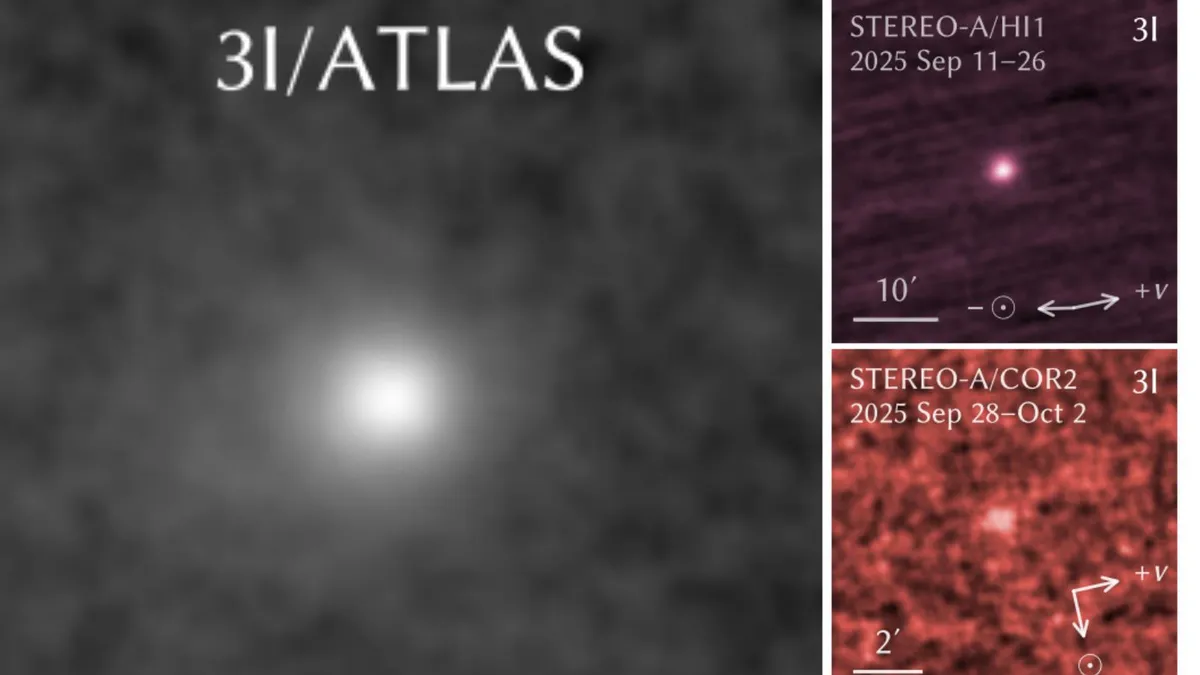
The interstellar invader Comet 3I/ATLAS is continuing to astonish scientists, this time by brightening at an unexpectedly rapid pace as it approaches the sun. Researchers are currently puzzled as to why this phenomenon is occurring. Comet 3I/ATLAS is notable for being only the third known object to have entered our solar system from another planetary system. This follows the discovery of the cigar-shaped space-rock 'Oumuamua in October 2017 and the first interstellar comet, 2I/Borisov, which was spotted in August 2019. These brief encounters with interstellar bodies offer a unique opportunity to understand the chemical compositions found around other stars.
Experts anticipated that Comet 3I/ATLAS would brighten considerably as it reached its closest approach to the sun, known as perihelion, on October 29. Such brightening is a common phenomenon among comets that originate from the Oort Cloud, a shell of icy bodies located at the edge of our solar system. The brightening occurs due to radiation from the sun, which causes solid ice to convert directly into gas—a process known as sublimation. This gaseous material erupts from the comet's nucleus, shedding solid dust and forming the comet's coma and characteristic tail. The reflected light from this dust enhances the comet's brightness.
However, Comet 3I/ATLAS has brightened much faster than expected. The reason behind this rapid increase in brightness, which surpasses the typical brightening rates of most Oort Cloud comets at similar radial distances, remains a mystery. Researchers Qicheng Zhang from the Lowell Observatory in Flagstaff, Arizona, and Karl Battams, an astrophysicist at the Naval Research Laboratory in Washington, D.C., have discussed these observations in a paper published on the research repository site arXiv.
The rapid brightening of Comet 3I/ATLAS was tracked by several space-based instruments, including the STEREO-A and STEREO-B spacecraft, which are part of the Solar Terrestrial Relations Observatory (STEREO), as well as the Solar and Heliospheric Observatory (SOHO) and the weather satellite GOES-19. Ground-based instruments will not be able to observe the interstellar comet again until it passes out from the other side of the sun into its post-perihelion phase, expected around mid- to late-November 2025.
The research team proposes several mechanisms that could explain the unexpectedly rapid brightening of this interstellar comet. One possibility is that the speed at which Comet 3I/ATLAS approaches the sun plays a crucial role. Alternatively, the unique characteristics of the comet itself may hold clues. If the internal composition of 3I/ATLAS differs from that of typical Oort Cloud comets, it could indicate that its originating planetary system has a distinct chemical makeup. Oddities in the nucleus's properties—such as composition, shape, or structure—might have stemmed from its host system or its long journey through interstellar space, potentially contributing to its rapid brightening.
With no definitive physical explanation, the future behavior of Comet 3I/ATLAS after perihelion remains uncertain. The comet could reach a plateau in brightness, or it might continue to brighten briefly before experiencing a rapid fade. The researchers also suggest that sublimation processes for 3I/ATLAS may differ from expectations, particularly since the comet is still predominantly undergoing sublimation of carbon dioxide at a surprisingly close distance from the sun—about three times the distance between Earth and the sun. This unusual condition may have caused cooling, which could have suppressed the sublimation of water ice into steam.
Clearly, Comet 3I/ATLAS continues to both baffle and intrigue scientists. It is highly likely that once it escapes the sun's glare, further observations will uncover even more mysteries surrounding this interstellar intruder. Ongoing studies are expected to provide a more comprehensive understanding of the comet's behavior and characteristics, as noted by Zhang and Battams in their concluding remarks.